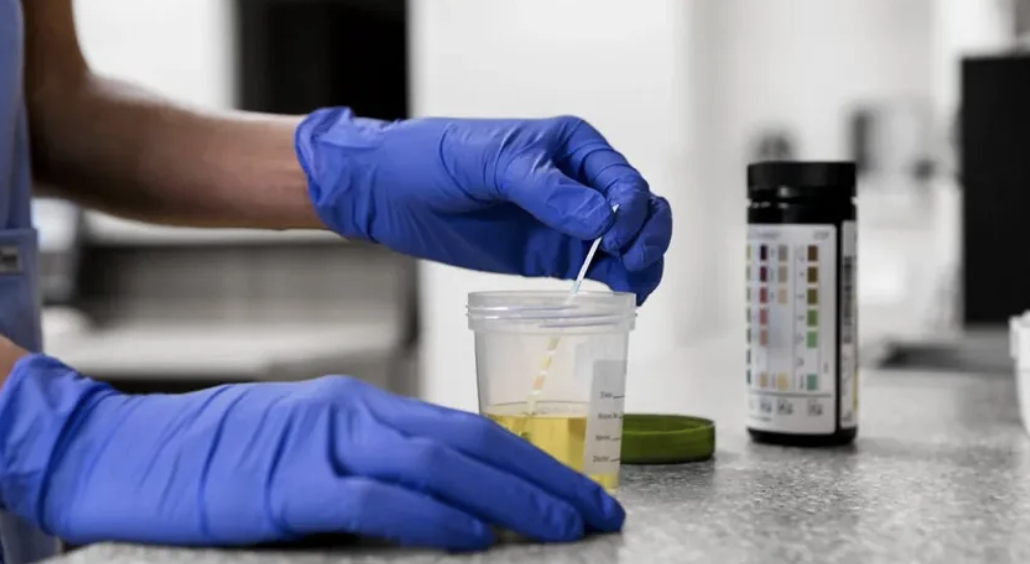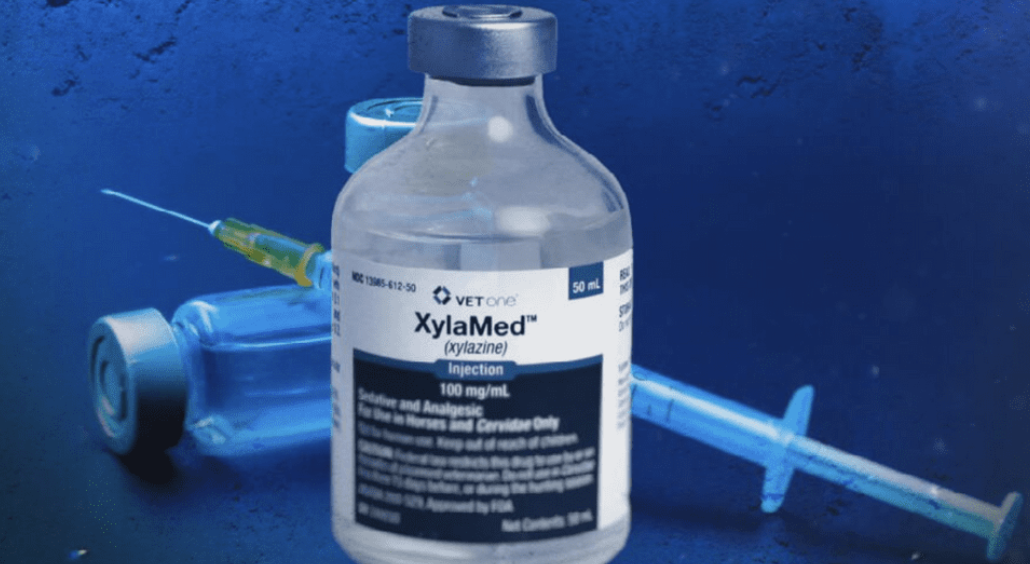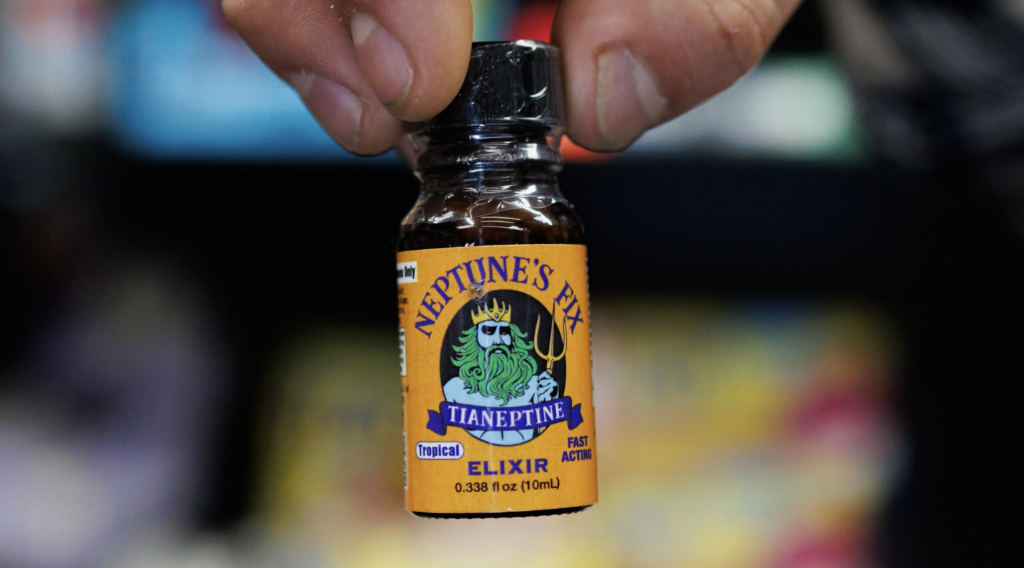Internet addiction is the compulsive use of the internet that negatively affects health, relationships, and daily responsibilities. It is marked by poor self-control over online behavior.
Symptoms include euphoria while online, fatigue, sleep disturbances, muscle pain from inactivity, dry or strained eyes, digestive issues, weight changes, and withdrawal symptoms when offline.
Signs include constant thoughts about the internet, excessive usage, work or school issues, lying about time spent online, poor hygiene, and social withdrawal.
Causes include genetic predisposition, psychological conditions, environmental triggers, peer influence, and the pursuit of instant gratification.
Effects involve social isolation, harmful online interactions, health problems, disrupted sleep, declining academic or job performance, and strained relationships.
Treatment includes psychotherapy, family-based interventions, prescribed medications, lifestyle adjustments, and structured digital detox programs.
What is internet addiction?
Internet addiction, or problematic internet use, is the compulsive and excessive use of the internet despite negative consequences. Individuals with this condition struggle to control their screen time and often lose track of time spent online. Over time, this leads to dependency, emotional distress, and withdrawal symptoms when internet access is limited.
According to a 2022 study by Fehér Gergely titled “Internet Addiction,” approximately 5% of the global population is affected. Common behaviors include prioritizing social media, gaming, shopping, or browsing over responsibilities, relationships, and self-care.
What does problematic internet use mean?
Problematic Internet Use (PIU) refers to excessive or poorly controlled preoccupations, urges, or behaviors regarding internet use that lead to impairment or distress. This includes compulsive engagement in online activities such as gaming, social media, or browsing, which interferes with daily life, work, or relationships. PIU is characterized by three main factors: obsession (e.g., obsessive thoughts about checking social media), neglect (failing to complete homework due to internet use), and lack of control (unable to stop online activity).
While PIU and internet addiction are closely related, they are not identical. PIU is a broader term encompassing various forms of excessive internet use that may not meet the clinical criteria for addiction. Internet addiction is often considered a more severe form of PIU, involving significant impairment and distress. Some researchers use PIU as a neutral term that does not inherently imply the presence of psychopathology, whereas internet addiction suggests a diagnosable condition.
A 2022 study by Moreno et al. titled “Measuring Problematic Internet Use, Internet Gaming Disorder, and Social Media Addiction in Young Adults: Cross-sectional Survey Study” found that 53.6% of participants met the criteria for PIU. The study highlighted the overlap between PIU, Internet Gaming Disorder (IGD), and Social Media Addiction (SMA), indicating that while these conditions share similarities, they also have distinct features.
What are the symptoms of internet addiction?
Symptoms of internet addiction include both psychological and physical manifestations that indicate problematic online behavior. One key symptom is euphoria when online.
- According to the 2015 study by Min Liu and Jianghong Luo titled “Relationship between peripheral blood dopamine level and internet addiction disorder in adolescents: a pilot study,” individuals with internet addiction experience a heightened sense of pleasure while engaging in internet-based activities such as gaming or chatting, driven by increased dopamine levels that mimic the effects of addictive substances.
- Another symptom is fatigue, which results from prolonged internet usage, often late at night, leading to chronic tiredness that impairs concentration and daily functioning. Sleep problems are also prevalent. The 2022 study “Digital Addiction and Sleep” by Birgitta Dresp-Langley and Axel Hutt, which examined 2,749 participants, found that 67.6% scored above 30 on the Internet Addiction Test (IAT), indicating a likely addiction, while 73.5% had poor sleep quality based on the Pittsburgh Sleep Quality Index. The study concluded that internet addiction significantly predicted poor sleep quality, accounting for 13.2% of the variation.
- Muscle aches and pains are common due to inactivity and poor posture during prolonged online sessions. These include neck and back pain, along with repetitive strain injuries like carpal tunnel syndrome. Dry eyes and other vision-related issues also arise from excessive screen time. A 2018 paper by Balhara et al., titled “Problematic Internet Use among Students in South-East Asia: Current State of Evidence,” reviewed 38 studies and found that 19% of participants reported eye strain, a symptom of digital eye strain or computer vision syndrome, caused by prolonged screen exposure.
- Digestive issues occur due to irregular eating patterns and poor dietary habits. In the 2023 study “Internet Addiction in Constipated Adolescents” by Sevim Çakar and Gülin Eren, researchers found that adolescents with internet addiction commonly experienced functional constipation. This was linked to the consumption of low-fiber junk food and a lack of dietary regulation during internet use.
- Unintended weight changes also occur. Some individuals lose weight due to skipped meals or a lack of appetite while online, while others gain weight from excessive snacking or eating out of stress. Lastly, withdrawal symptoms such as irritability, anxiety, and emotional distress occur when internet access is restricted. These responses resemble withdrawal symptoms in substance addiction, signaling psychological dependence on internet use.

What are the signs of internet addiction?
Here are the signs of internet addiction presented as bullet points:
- Preoccupation with the internet: Individuals constantly think about previous or future online experiences. According to Manish Kumar and Anwesha Mondal in “A study on Internet addiction and its relation to psychopathology and self-esteem among college students,” this mental fixation reduces interest in offline tasks and disrupts daily focus.
- Excessive time online: Internet addicts spend extended hours online, often continuing through meals, social gatherings, or late into the night, even when not required for work or essential purposes. This disrupts normal routines and obligations.
- Problems at work or school: Academic and professional performance declines due to difficulty balancing responsibilities with online activity. A 2024 study by Gülçin Güler Öztekin titled “Associations between internet addiction and school engagement among Turkish college students: mediating role of psychological distress” showed that high internet addiction levels are linked to increased psychological distress and decreased school engagement.
- Lying about internet use: Addicted individuals often downplay or hide the actual amount of time spent online. This dishonesty stems from guilt or fear of judgment, and can lead to secrecy and distrust in relationships.
- Neglecting personal hygiene: Excessive internet use can lead to poor grooming habits and hygiene. A 2018 study by Subin Park and Jung Hyun Lee, “Associations of Internet Use with Oral Hygiene Based on National Youth Risk Behavior Survey,” found that among 73,238 participants, 15.9% with problematic internet use brushed their teeth less frequently and reported lower perceived oral health.
- Withdrawal from face-to-face social interactions: Internet addiction often leads to isolation from in-person relationships. Individuals may avoid social events and real-world communication, leading to weakened personal connections.
What are the causes of internet addiction?
Here are the causes of internet addiction listed in bullet point format:
- Genetics: Genetic predisposition plays a role in internet addiction. A 2023 study by Haghighatfard et al., “The first genome-wide association study of internet addiction,” identified 72 single nucleotide polymorphisms (SNPs) strongly associated with internet addiction, suggesting a biological basis for compulsive online behavior.
- Psychological factors: Underlying psychological conditions such as depression, anxiety, stress, and low self-esteem often drive individuals to excessive internet use for emotional relief. A 2018 study by Manish Kumar and Anwesha Mondal, “A study on Internet addiction and its relation to psychopathology and self-esteem among college students,” found a significant link between internet addiction and various psychological issues.
- Environmental influences: Constant availability of internet-connected devices and platforms designed for engagement contribute to addictive behaviors. The immersive design of social media, gaming, and streaming services makes it easier for users to fall into excessive patterns of use.
- Peer pressure: Social influence encourages internet overuse, especially among adolescents. A 2023 study by Xu et al., “Peer pressure and adolescent mobile social media addiction: Moderation analysis of self-esteem and self-concept clarity,” showed peer pressure significantly increases the risk of mobile social media addiction.
- Instant gratification: The internet provides immediate rewards, reinforcing compulsive use. A 2004 study by Song et al., “Internet Gratifications and Internet Addiction: On the Uses and Abuses of New Media,” found that users develop addictive patterns through gratifications such as information seeking, aesthetic experiences, online communities, personal recognition, entertainment, and relationship maintenance.
Is loneliness the main cause of internet addiction?
No, internet addiction is not primarily caused by loneliness, although loneliness can be a contributing factor. Internet addiction results from a complex interplay of biological, psychological, and environmental influences, including genetic predispositions, co-occurring mental health disorders, and the design of digital platforms that reward prolonged use.
Digital features such as instant feedback, personalized content, and social validation encourage compulsive behavior across a broad emotional spectrum, not limited to loneliness. Individuals often turn to the internet for various reasons, including coping with anxiety, escaping stress, or satisfying the need for immediate gratification.
However, perceived loneliness does play a significant role, especially among youth. According to a study titled “The Role of Perceived Loneliness in Youth Addictive Behaviors” by Savolainen et al., published in Behavioral Sciences in 2020, loneliness was found to significantly increase the risk of developing addictive behaviors like compulsive social media use, online gaming, and general internet dependency. The study emphasized that interventions targeting social connection could reduce the risk of internet-related behavioral issues.
Is digital marketing contributing to internet addiction?
Yes, digital marketing contributes to internet addiction by using algorithms, personalized content, and targeted advertisements designed to capture and retain user attention. These strategies create constant engagement loops that encourage prolonged screen time, fostering compulsive online behaviors.
Why do people become addicted to the internet?
The internet is addictive because it activates the brain’s dopamine system, reinforcing behaviors through rapid and repeated rewards, such as likes, messages, notifications, or game achievements. These instant feedback loops condition users to stay engaged longer and return more frequently, creating a compulsive pattern of use.
Its 24/7 accessibility, endless variety of content, and personalized experiences further intensify this effect. Whether users are seeking entertainment, social validation, or emotional escape, the internet provides immediate gratification, which makes disengagement difficult.
According to a study titled “Who Spends Too Much Time Online?” by Koo and Nyunt, published in Behavioral Sciences in 2023, individuals with poor self-regulation, high impulsivity, and frequent mood disturbances are more likely to engage in problematic internet use. The study emphasized that the combination of individual vulnerabilities and design features of online platforms fosters overuse, supporting the idea that internet addiction is driven by both psychological traits and digital architecture.

What are the effects of internet addiction?
The effects of internet addiction include a wide range of physical, psychological, and social consequences that worsen over time with continued excessive use.
- Social isolation: While the internet facilitates virtual interaction, it often displaces real-world relationships. Excessive screen time reduces opportunities for in-person engagement, leading to loneliness and emotional withdrawal. As described by Andrew P. Smith and Hasah Alheneidi in The Internet and Loneliness (2023), reliance on digital interaction undermines meaningful human connection, intensifying feelings of social detachment.
- Negative online experiences: Individuals with internet addiction are more likely to encounter cyberbullying, online harassment, and harmful content. These experiences lower self-esteem and increase emotional distress, which often drives further internet use as a coping mechanism. According to a 2023 study by Vercillo et al., “Internet Addiction and Mental Health,” individuals who exhibit compulsive online behavior are more vulnerable to emotional disturbances, depression, and anxiety, particularly when exposed to toxic online environments.
- Health risks: Prolonged internet use contributes to several physical health problems. These include digital eye strain, headaches, neck and back pain from poor posture, and repetitive strain injuries. A 2011 study by Alavi et al. showed that internet addiction is associated with hyperstimulation, poor dietary habits, and physical inactivity, which lead to long-term health complications.
- Sleep disorders: Exposure to screens before bedtime disrupts melatonin production and impairs sleep quality. Blue light and mental overstimulation interfere with the body’s circadian rhythm, causing insomnia, delayed sleep onset, and fragmented rest. Prolonged nighttime internet use significantly worsens these outcomes, contributing to chronic fatigue and decreased cognitive performance.
- Poor academic performance: Excessive internet usage affects memory, concentration, and time management, especially among students. A 2020 study by Javaeed et al. found that over 28% of medical students with extreme internet dependency had significantly reduced academic performance. Similarly, a 2022 study by Brand et al. titled “Can Internet Use Become Addictive?” identified poor educational outcomes and reduced cognitive flexibility as common effects among those with internet overuse.
- Impaired relationships: Internet addiction can lead to emotional distance in romantic, familial, and social relationships. Addicted individuals often prioritize screen time over in-person interaction, leading to neglect, misunderstandings, and broken trust. Over time, this behavioral pattern weakens relationship satisfaction and intimacy.
Additionally, a 2023 study by Şimşekli and Gökçay titled “The Relationship Between Nurses’ Internet Addictions and Quality of Life” found that individuals with high internet addiction scores reported significantly lower quality of life across emotional, social, and occupational domains. These findings emphasize the far-reaching consequences of uncontrolled internet use on personal well-being and day-to-day functioning.

How is internet addiction linked to mental health issues?
The relationship between internet addiction and mental health is bidirectional, each condition can exacerbate the other. Individuals with pre-existing psychological conditions such as anxiety, depression, or attention deficit hyperactivity disorder (ADHD) are more vulnerable to developing internet addiction, often using excessive online engagement as a maladaptive coping strategy. Over time, this reliance on digital interaction to avoid negative emotions worsens both the addiction and the underlying mental health symptoms.
As compulsive internet use continues, emotional regulation declines, leading to heightened psychological distress, increased social withdrawal, and reduced overall well-being. A 2020 study by Lebni et al., titled A Study of Internet Addiction and Its Effects on Mental Health, found that Iranian university students with higher levels of internet addiction scored significantly lower in general mental health across all domains of the GHQ-28, indicating an inverse relationship between well-being and online dependency.
Additionally, a 2023 study by Devine and Ogletree titled Internet Addiction: Cognitive and Dispositional Factors concluded that individuals with higher levels of neuroticism, poor cognitive control, and lower self-esteem were more likely to exhibit internet addiction. The study emphasized that certain personality traits and thought patterns significantly contribute to both the development of internet addiction and its impact on mental health.
Together, these findings confirm that internet addiction not only stems from mental health vulnerabilities but also intensifies them, creating a reinforcing cycle that requires psychological intervention.
How is internet addiction connected to gaming addiction?
Internet addiction and gaming addiction are closely interconnected, as both are classified as behavioral addictions influenced by prolonged digital engagement. Online gaming is often considered a subtype of internet addiction, marked by excessive, uncontrollable involvement in video games that interferes with everyday responsibilities, social relationships, and mental health.
The immersive design of modern games, especially those with real-time multiplayer functionality, competitive rankings, and in-game rewards, significantly heightens the addictive potential. These features offer instant gratification, emotional escape, and social connection, which mirror the psychological drivers behind broader internet addiction.
A 2022 study by Ng, Wiemer-Hastings, and colleagues titled Addiction to the Internet and Online Gaming emphasized that gaming addiction often shares overlapping symptoms and underlying mechanisms with Internet addiction. The study found that individuals addicted to online gaming also exhibited signs of internet dependency, including withdrawal, tolerance, and functional impairment in daily life. It concluded that while the platforms and behaviors may differ slightly, both forms of addiction share core psychological patterns, such as poor self-regulation, social avoidance, and compulsive reward-seeking behavior.
How is internet addiction related to social media addiction?
Social media addiction is considered a specific form of internet addiction. It involves excessive, compulsive engagement with platforms like Facebook, Instagram, TikTok, and others, activities that significantly contribute to overall internet overuse. These platforms are intentionally designed to sustain prolonged interaction through features like infinite scrolling, real-time notifications, algorithmic content recommendations, and social validation mechanisms (likes, comments, shares).
Because of these mechanisms, individuals with social media addiction often struggle with poor impulse control, emotional dependency on online interactions, and diminished offline social engagement, all of which are hallmark traits of internet addiction.
A 2022 study by Chen et al., titled The Relationship of Social Media Addiction With Internet Use and Perceived Health, found that increased social media addiction correlates directly with higher internet use and declining perceived health, indicating that social media is not just a contributing factor but a central driver of problematic internet behavior.
Further supporting this, a study by Błachnio and Przepiorka titled Relations Between Facebook Intrusion, Internet Addiction, Life Satisfaction, and Self-Esteem found that Facebook intrusion, a term describing excessive and disruptive Facebook use, strongly predicted internet addiction levels. The study concluded that compulsive social media behavior is closely linked to reduced life satisfaction and self-esteem, reinforcing the cyclical nature of digital dependence
What are the treatments for internet addiction?
Treatments for internet addiction encompass various therapeutic interventions to help individuals reduce and manage compulsive internet use. The treatments for internet addiction are listed below:
- Psychotherapy
Psychotherapy involves different therapeutic techniques to address underlying psychological factors contributing to internet addiction. Motivational enhancement therapy and cognitive behavioral therapy (CBT) are some of the most studied treatments. Motivational interviewing helps individuals recognize emotions that trigger online activities, while CBT assists in identifying and changing negative thoughts and behaviors linked to internet use. (Manoj Kumar Sharma & Thamil Selvan Palanichamy, 2018). - Family therapy
Family therapy engages family members in the recovery process to address relational dynamics that contribute to internet addiction. It focuses on improving communication, resolving conflicts, and creating a supportive environment at home. Educating family members about the addiction helps promote understanding and facilitates problem-solving, which accelerates recovery. - Medication
When internet addiction co-occurs with mental health disorders, medications may be used to treat both conditions. Antidepressants and anxiolytics are commonly prescribed for related disorders, while research also investigates medications like naltrexone to directly target compulsive online behaviors. (Chadha et al., 2024). - Lifestyle changes
Implementing lifestyle adjustments, such as establishing a structured routine, can help manage internet addiction. Designating specific times for internet use, encouraging offline activities like hobbies and physical exercise, and fostering social interactions can reduce dependency on online engagement and promote overall well-being. - Digital detox programs
Digital detox programs involve taking a break from digital devices and internet use for a set period to help reset the individual’s relationship with technology. Along with detox, smartphone applications for self-control and internet blocking or filtering software can aid in managing excessive internet use. (Chadha et al., 2024).

What are the steps to overcome internet addiction?
Overcoming internet addiction requires a structured approach that incorporates self-awareness, behavioral modifications, and external support systems. The following 12 steps provide actionable strategies for overcoming internet addiction:
- Acknowledge the problem
The first step is recognizing and accepting that internet use has become problematic, leading to negative consequences in daily life. - Set specific goals and limits for internet use
Establishing clear, realistic limits on internet usage helps manage and track progress, preventing excessive use. - Create a balanced daily routine
Integrating offline activities such as exercise, hobbies, and social interactions into your daily schedule promotes a healthier balance between online and offline life. - Identify triggers
Recognizing the situations, emotions, or environments that prompt compulsive internet use allows for targeted behavior changes. - Use productivity tools
Leverage tools like website blockers, screen time trackers, and time management apps to limit access to distracting online activities. - Seek professional help
Counseling or therapy can address the psychological factors behind internet addiction, helping to work through anxiety, depression, or stress. - Build a support network
Relying on family, friends, or support groups helps to create accountability and encouragement during the recovery process. - Create technology-free zones
Designating areas of the home, such as the bedroom or dining room, as technology-free zones helps reduce opportunities for excessive internet use. - Practice mindfulness
Engaging in mindfulness exercises such as meditation or deep breathing can help reduce the impulse to turn to the internet for stress relief or escapism. - Set device-free times
Scheduling device-free periods during the day—such as during meals, before bed, or during family time—helps break the habit of constant internet engagement. - Engage in offline activities
Actively participating in activities that do not involve the internet, such as reading, playing sports, or spending time outdoors, helps to divert focus and energy. - Be patient and persistent
Overcoming internet addiction takes time. Remaining committed and understanding that setbacks may occur will help sustain progress.

How can you support someone with internet addiction?
Supporting someone with internet addiction requires empathy, consistency, and proactive engagement. The goal is not to control their behavior but to create a supportive environment that encourages healthier habits and addresses underlying emotional or psychological triggers.
- Encourage open communication: Start by discussing their internet use in a calm, non-judgmental way. Express concern rather than criticism, and help them reflect on how their digital habits may be affecting their daily life, relationships, or mental health.
- Set boundaries: Collaboratively set healthy screen time limits and promote a more balanced routine that includes offline activities, like physical exercise, hobbies, or in-person social interaction. Creating tech-free zones or designated hours without internet access can also help reduce dependency.
- Seek professional help: Encourage them to see a therapist or counselor, especially if the addiction is linked to deeper emotional issues such as anxiety or depression. Therapy can provide coping mechanisms, help identify behavioral triggers, and reduce compulsive internet use. According to a study by Zhou and Friedel titled Internet Addiction and the Treatment of Depression: A Clinical Study, addressing comorbid conditions like depression through therapy significantly reduces compulsive internet behavior and improves overall treatment outcomes. The research emphasizes that mental health support can directly lessen the intensity of internet addiction.
- Involve family and friends: Foster accountability and emotional safety by involving trusted relatives or friends. A supportive network can provide encouragement, monitor progress, and serve as a buffer against relapse.
What are the withdrawal symptoms of internet addiction?
Symptoms of internet addiction withdrawal are physical, emotional, and psychological reactions that occur when an individual reduces or stops excessive internet use. The symptoms of internet addiction withdrawal include:
- Irritability
Increased frustration, agitation, or anger when internet access is unavailable, often in response to minor inconveniences or disruptions. - Anxiety
Persistent worry or nervousness about missing out on updates, social interactions, or important events due to the lack of online engagement. Anxiety can make it difficult to focus or relax. - Restlessness
An overwhelming urge to check the internet, combined with an inability to sit still or focus on tasks without the constant stimulation previously provided by online activities. - Headaches
Tension headaches or discomfort in the head resulting from reduced screen time, altered routines, or physical strain from excessive internet use in the past (e.g., dehydration, poor posture, or eye strain). - Depression
Feelings of sadness, hopelessness, and a loss of interest in activities that once brought joy. The reduction in internet use can exacerbate underlying emotional issues, creating a sense of emptiness or loneliness. - Mood swings
Rapid and intense changes in emotional states, ranging from happiness to irritability or sadness. These mood fluctuations can be difficult to manage and may impact relationships and daily life.
Can internet addiction be treated with counseling or support groups?
Yes, internet addiction can be effectively treated with counseling and support groups. Counseling, particularly Cognitive Behavioral Therapy (CBT), helps individuals recognize the triggers behind their compulsive internet use, challenge distorted thinking patterns, and develop healthier coping strategies. Therapists guide clients in setting boundaries, restructuring daily routines, and addressing any underlying mental health conditions such as anxiety or depression.
Support groups offer peer-based accountability and emotional validation. Groups like Internet & Tech Addiction Anonymous (ITAA) or therapist-led community programs provide a space for individuals to share experiences, build insight, and stay committed to recovery through structured steps or group activities.
Both approaches, often used together, can significantly reduce compulsive behaviors and help individuals regain control over their internet use.
What are the different types of internet addiction?
Different types of internet addiction refer to various forms of compulsive online behavior, each linked to excessive and unhealthy use of specific internet activities. These types include:
- Computer or gaming addiction
An overwhelming urge to play online video games for extended periods, often leading to neglect of professional, academic, and personal responsibilities. - Compulsive information seeking
The uncontrollable need to search for and consume vast amounts of online content, spending excessive time browsing news sites, forums, and informational resources. - Cybersex addiction
Excessive engagement in online pornography, sexual chat rooms, or other virtual sexual activities can damage intimate relationships and create emotional distress and guilt. This addiction often leads to unrealistic expectations about intimacy and sex, as highlighted by research. - Net compulsions
A compulsion to engage in online behaviors like stock trading, gambling, and auction site use which can lead to significant financial losses and disruptions to daily life. The constant accessibility of such platforms increases the risk of addiction. - Cyber (online) relationship addiction
Uncontrolled involvement in online relationships through social networking, chat rooms, and messaging. This addiction is often driven by the desire to escape real-life concerns, adventure, or romance, and can significantly affect offline relationships and overall well-being.
Who is most vulnerable to internet addiction?
Adolescents are the most vulnerable group when it comes to internet addiction. Their developing brains, limited self-regulation, and high emotional reactivity make them more susceptible to compulsive digital behaviors. The constant availability of smartphones, social media, online gaming, and streaming content provides endless stimulation, while their emotional reliance on peer approval amplifies online engagement. A 2019 study identified adolescents as having the highest prevalence of high-risk internet dependence, surpassing both children and adults.
This vulnerability is often worsened by factors such as cyberbullying, academic pressure, and social isolation. Many teens turn to the internet as a coping mechanism for emotional stress, making them more likely to develop dependency.
Emerging research also shows that other populations are increasingly vulnerable, including:
- Military service members: A 2023 study by Schmidt and Valdez titled Behaviors Associated with Internet Use in Military Populations found elevated internet dependency in personnel dealing with trauma, isolation, or job-related stress. This suggests that internet use may serve as a maladaptive coping mechanism in high-stress environments.
- College students and immigrants: According to a study by Li (2021), high levels of acculturative stress, particularly among international students, were linked to internet addiction. The internet often becomes a refuge from cultural adjustment challenges and homesickness.
- Young adults in high multitasking environments: A 2023 study by Lin and Kononova, Screen Addiction and Media Multitasking Among American College Students, reported that students who frequently multitask across devices are more likely to show symptoms of screen addiction. Media multitasking contributes to decreased focus, poor academic performance, and higher rates of compulsive digital behavior.
What factors increase the risk of developing internet addiction?
Several factors increase the risk of developing internet addiction, often working in combination to reinforce compulsive online behavior. Psychological factors such as anxiety, depression, ADHD, and low self-esteem can drive individuals to seek comfort and escape through excessive internet use. Personality traits like impulsivity, poor emotional regulation, and a low sense of control further increase susceptibility.
Environmental influences also play a major role; easy access to digital devices, lack of parental supervision, exposure to immersive digital platforms, and the absence of offline recreational alternatives can all contribute.
Social factors, including peer pressure, cyberbullying, loneliness, and a need for social validation, particularly among adolescents, further amplify the risk. Additionally, certain populations, such as college students, military personnel, and individuals undergoing acculturative stress, are more vulnerable due to the psychological pressures they face. Altogether, these interconnected factors heighten the likelihood of developing internet addiction, especially when underlying mental health needs remain unaddressed.
















